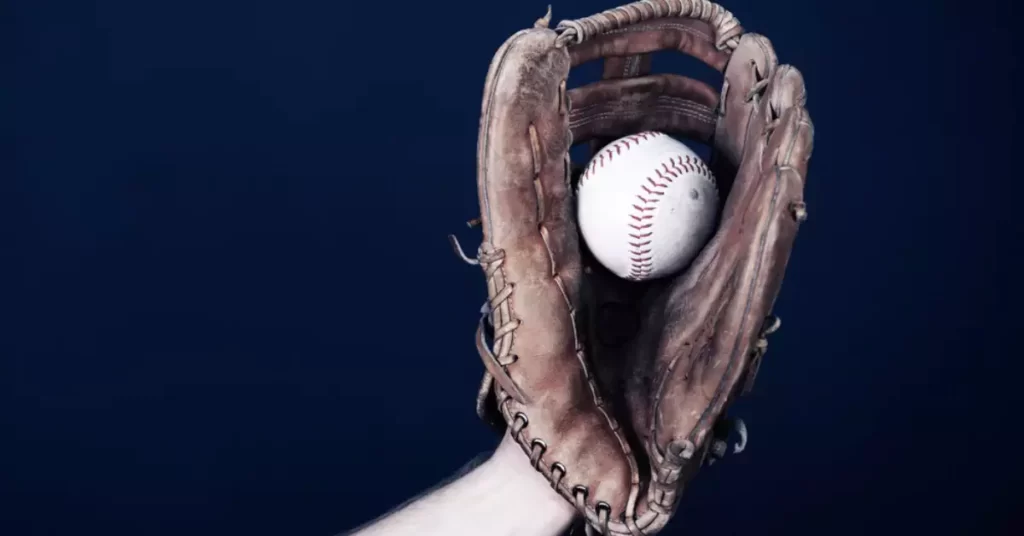Baseball gloves are essential equipment for both professional and amateur players. A properly functioning glove can make all the difference in the field. But how should a baseball glove close to ensure optimal performance?
The ideal closure of a baseball glove depends on the player’s position and personal preferences. In general, the glove should close easily, firmly grip the ball, and provide maximum control during a catch or throw. Different styles of gloves cater to these requirements in various ways.
Explore this article further to learn about the factors influencing a glove’s closure, the different closure types available, and tips for choosing the perfect glove to enhance your game. With this knowledge, you’ll be well-equipped to make an informed decision on the right glove for you.
Types of Baseball Glove Closures
There are two primary types of baseball glove closures: open back and closed back.
Open Back Gloves
Open back gloves have a space between the wrist strap and the top of the glove, providing ventilation and flexibility. This design is often preferred by infielders, as it allows for quick transitions and more wrist movement.
Closed Back Gloves
Closed back gloves have a solid piece of leather that connects the wrist strap to the top of the glove. This design offers greater support and stability, making it a popular choice for outfielders, pitchers, and catchers.

How to Determine the Proper Glove Closure for Your Position
Infielders
Infielders typically prefer open back gloves for their increased flexibility and faster transitions.
Outfielders
Outfielders often choose closed back gloves for the added support and stability when catching fly balls.
Pitchers
Pitchers usually opt for closed back gloves to conceal their grip on the ball and maintain a stable wrist position.
Catchers
Catchers require a specialized mitt with extra padding and a closed back design for maximum support and protection.
First Basemen
First basemen need a specialized mitt with a closed back design to provide the necessary support for scooping ground balls and stretching for throws.
FAQs
How do I know if my glove closure is too tight or too loose?
A proper glove closure should feel snug but not overly tight. Your hand should fit comfortably within the glove without feeling pinched or restricted.
A closure that is too tight can limit your range of motion and negatively impact your performance. If the closure is too loose, you may experience a lack of support and control, increasing the likelihood of dropping the ball.
Adjust the wrist strap or lacing system until you find the right balance of comfort, support, and flexibility.
Can I switch glove closures if I change positions on the field?
Yes, you can switch glove closures if you change positions. However, it’s essential to consider the specific demands of each position when choosing a glove closure.
For instance, infielders typically prefer open back gloves for greater flexibility and faster transitions, while outfielders and pitchers often choose closed back gloves for added support and stability.
If you frequently switch positions, you may want to invest in a versatile glove that suits various roles on the field or have multiple gloves designed for specific positions.
How long does it take to break in a baseball glove?
The break-in process for a baseball glove can vary depending on the glove’s material, construction, and your preferred method of breaking it in.
Generally, it can take anywhere from a few days to a few weeks to break in a new glove properly. The key is to be patient and consistently work on the glove to ensure it molds to your hand and provides optimal comfort and performance.
Techniques such as applying conditioning oil, playing catch, and using a glove mallet or the ball and rubber band method can help speed up the break-in process.
Final Verdict
As we wrap up our discussion on baseball glove closure, it’s crucial to remember that personal preference and comfort are paramount.
The right glove should not only cater to your position on the field, but also feel like an extension of your hand. When selecting a glove, prioritize its ease of use, ball control, and your overall satisfaction.
In the end, finding the perfect glove is a matter of trial and error. Don’t be afraid to try out multiple styles and brands. Once you’ve found the glove that checks all the boxes, your performance on the field will undoubtedly soar.

